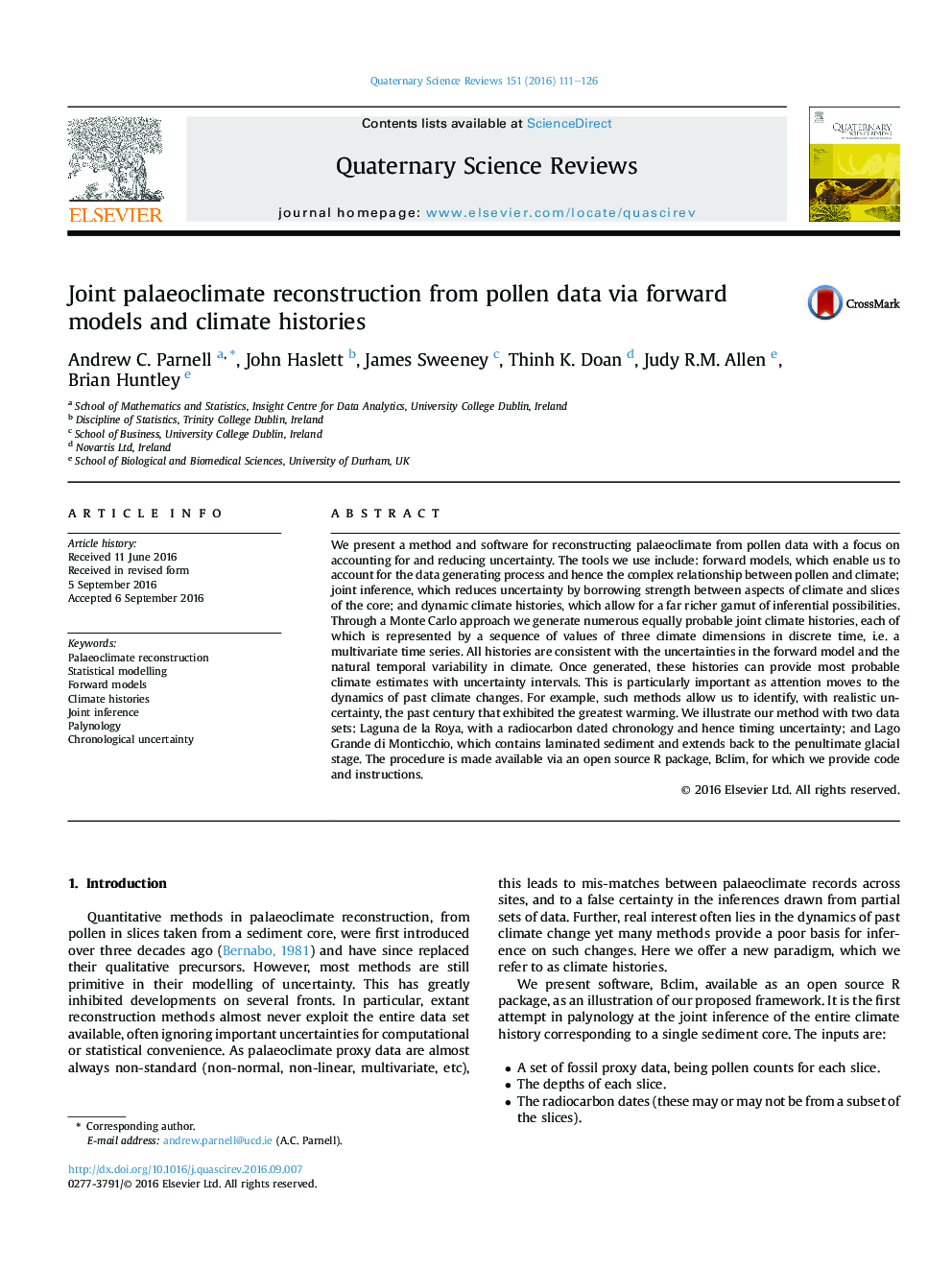| Article ID | Journal | Published Year | Pages | File Type |
|---|---|---|---|---|
| 6445941 | Quaternary Science Reviews | 2016 | 16 Pages |
Abstract
We present a method and software for reconstructing palaeoclimate from pollen data with a focus on accounting for and reducing uncertainty. The tools we use include: forward models, which enable us to account for the data generating process and hence the complex relationship between pollen and climate; joint inference, which reduces uncertainty by borrowing strength between aspects of climate and slices of the core; and dynamic climate histories, which allow for a far richer gamut of inferential possibilities. Through a Monte Carlo approach we generate numerous equally probable joint climate histories, each of which is represented by a sequence of values of three climate dimensions in discrete time, i.e. a multivariate time series. All histories are consistent with the uncertainties in the forward model and the natural temporal variability in climate. Once generated, these histories can provide most probable climate estimates with uncertainty intervals. This is particularly important as attention moves to the dynamics of past climate changes. For example, such methods allow us to identify, with realistic uncertainty, the past century that exhibited the greatest warming. We illustrate our method with two data sets: Laguna de la Roya, with a radiocarbon dated chronology and hence timing uncertainty; and Lago Grande di Monticchio, which contains laminated sediment and extends back to the penultimate glacial stage. The procedure is made available via an open source R package, Bclim, for which we provide code and instructions.
Related Topics
Physical Sciences and Engineering
Earth and Planetary Sciences
Geology
Authors
Andrew C. Parnell, John Haslett, James Sweeney, Thinh K. Doan, Judy R.M. Allen, Brian Huntley,
